Is Nuclear Energy The Future Of Alternative Fuel?
With the ever-pressing need to find alternative and sustainable fuel sources, the race to find the best ones is certainly on. There are countless factors that go into determining what might become the best options as humanity marches on into the future.
Total energy produced, cost, safety, sustainability, as well as the ability to rapidly expand the infrastructure utilized to produce and distribute the energy are all heavily weighted factors. It is demonstrable that nuclear energy checks off many of those boxes.
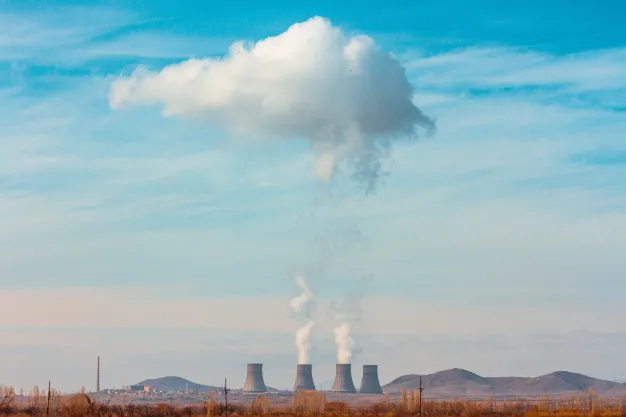
The general public is almost certainly aware of solar and wind as alternative fuel sources. Driving across various states or countries will undoubtedly yield views of what seem to be endless expanses of wind or solar farms.
Natural gas has been utilized for a long time and has a decent return on value, but natural gas is another fossil fuel, non-renewable type resource that may not be sustainable in the long term future.
Geothermal heat and power plants used to harness its energy output may someday rival nuclear. However, the current struggles include the need for geothermal plants to be near tectonic plates, the potential causing of earthquakes during drilling and an overall need for green energy sources to be pursued.
Yet, did you know that nuclear power plants produced 805 billion kilowatt-hours of electricity in 2017? That is enough to power 73 million homes. Emission-free. The fact of the matter is, nuclear has already proven useful and is continually improving.
Nuclear Is Already Being Used As A Viable Energy Source
We all have certain things that come to mind when we hear the phrase "nuclear". They likely are not all positive things, either. Some may be quite scary or off-putting. However, nuclear energy production has immense capability to provide cleaner, more efficient, and sustainable energy for our planet. We have already been using it for decades, whether it has had the spotlight or not.
Nuclear energy generates power through fission. Fission is the process of splitting uranium atoms to produce energy. The heat released by fission
is used to create steam that spins a turbine to generate electricity without the harmful byproducts emitted by fossil fuels.
Nuclear energy, despite some negative connotations, has become extremely safe as it has been further developed. The maintenance and refueling need remains low, so it remains efficient in terms of energy output for the invested money. It also already provides 50% of emission-free energy in America.
The advancements in technology will allow nuclear to change functions and fuel sources sooner than later. This will be an enormous advancement, as the capacity factor for nuclear energy already tops the list among alternative fuel sources; so this promising tech is only bound to get better.
There are many reasons why nuclear energy is already being utilized on such a large scale and will continue to be invested in to continue its contributions.
On the surface, renewables like wind and solar may seem like the easy answer. Nuclear can seem scary and dangerous. However, when broken down to the important numbers, facts, and events, nuclear comes out pretty clean.
Nuclear Energy Has The Best Capacity Factor of Any Fuel Source
Capacity factor is defined as the ratio of actual electrical energy output over a given period of time to the maximum possible electrical energy output over that period.
In other words, the capacity factor measures how efficient an energy source is. We can determine how much energy output any fuel source should have when it is operating at peak performance under ideal conditions.
Therefore, when measuring the actual output of that energy source, we can tell how efficient it is in terms of its capacity factor. It measures how frequently that fuel source is performing up to its potential.
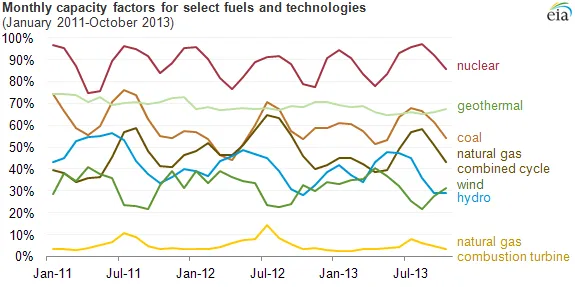
As shown in the above graph from the US Energy Information Administration, data taken over a two-year span, nuclear energy outperformed every other fuel source by a landslide.
There are times over the course of every year where nuclear reached close to 100% capacity factor, meaning very little energy output was lost and the nuclear plants were functioning very close to their full potential.
Nuclear rarely dropped below 80% capacity factor, while no other fuel source ever touched 80% capacity factor. Geothermal, as previously indicated, was consistently the closest in terms of capacity factor and they both outperformed every other fuel source by a long shot.
While solar and wind energy is both 100% renewable, as well as having almost no emissions and a very low cost of operation, their capacity outputs remain low due to dependence on environmental factors and weather. If the sun is not shining, or the wind is not blowing, they are next to useless.
Even in much more recent years, the leaderboard for capacity factor has remained unchanged, as technology for nuclear continues to improve.
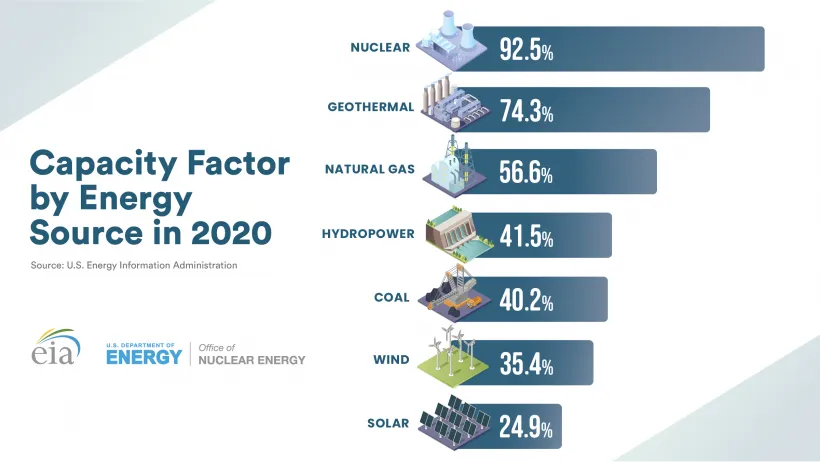
Nuclear continues to outperform everything. Geothermal is the closest, and yet still trails by almost a 20% reduction in capacity factor.
The above graph shows that solar energy is producing energy at its highest potential capacity during only 1/4th of the day. That makes perfect sense, considering the sun is gone 1/2 of the day, and the hours when the sun is rising or setting will also not allow the solar panels to operate at peak capacity.
Nuclear Energy Has A Small Footprint and Huge Energy Output
The space taken up by a nuclear reactor is relatively tiny, compared to the operational space needed from other alternative fuel sources. There has already been a lot of work on making reactors even smaller, as well.
According to the Nuclear Energy Institute (NEI), a singular 1,000-megawatt nuclear facility in the United States needs just over 1 square mile to operate. This includes the facility itself as well as surrounding land to ensure safety.
The NEI also says that wind farms would require 360 times more land area to operate. That equates to 430 wind turbines. Additionally, a solar photovoltaic plant requires 75 times more space. That is more than 3 million solar panels.
Nuclear Energy Emissions And Byproducts Are Next To None
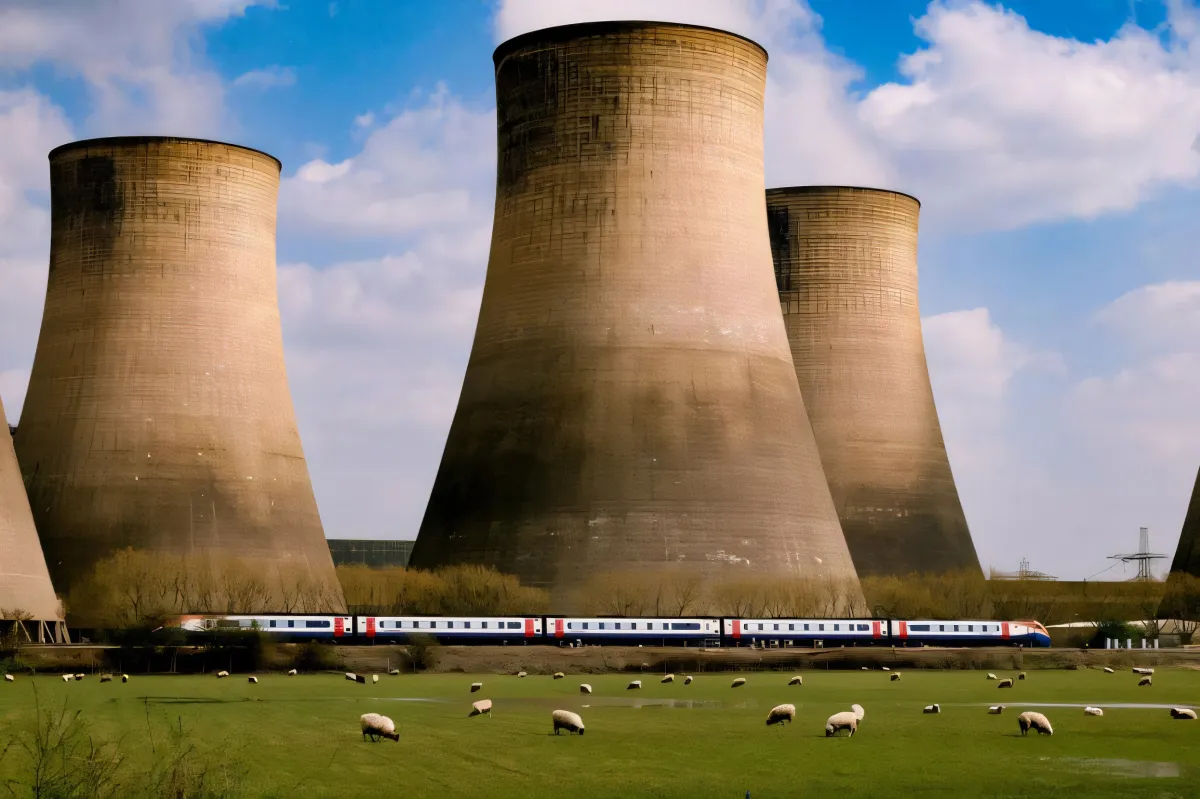
The small land footprint of nuclear plants is only one dimension of their advantageous production power. The NEI has also measured the number of greenhouse gasses that have avoided entering our earth's atmosphere under nuclear energy.
Since nuclear plants only produce steam as a byproduct, there is no carbon dioxide or other harmful emissions. Between 1995 and 2016, the United States alone avoided 14,000 million metric tons of carbon dioxide emissions due to the use of nuclear power plants.
That is equivalent to removing 3 billion cars from the road over a span of just two decades. Those numbers are hard to fathom, considering there are only an estimated 287 million cars on the road in the United States today.
In addition to keeping thousands of tons of harmful air pollutants out of our atmosphere, the physical waste from nuclear energy is minimal as well.
"The Ultimate Facts Guide about Nuclear Energy" from Energy.gov states that all the used nuclear fuel produced by the United States over the last 60 years could fit on a football field at a depth of fewer than 10 yards.
There are many undeniable benefits to nuclear power. Without a doubt, one of the main reasons is to help humanity break free from its dependence on fossil fuels and the harmful repercussions it brings.
Nuclear Power Plants Are Reliable and Constantly Improved
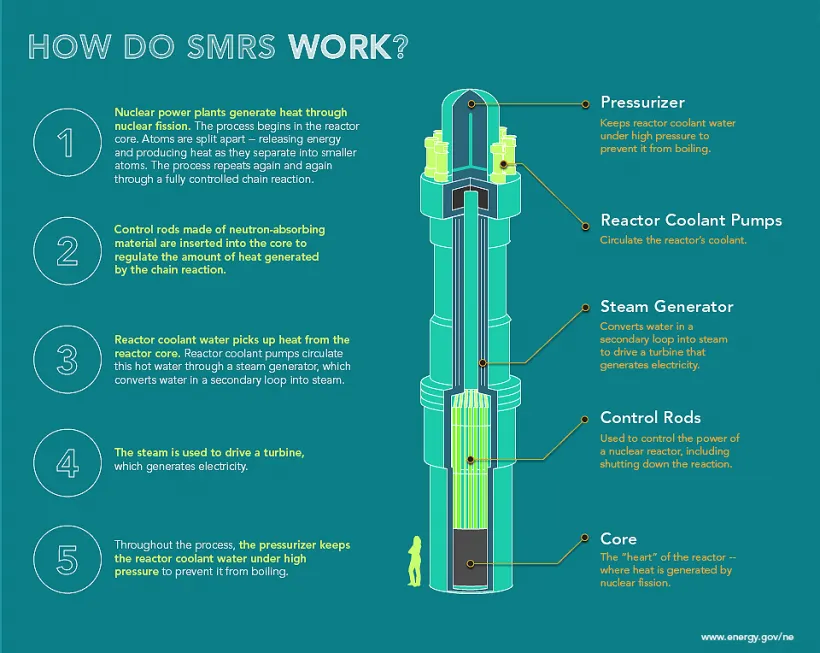
Thinking about nuclear power plants may lead you to think that they need constant work and a lot of manpower to keep safe. While safety is taken very seriously and plants are never neglected, they actually require less maintenance than many other options.
Nuclear power plants are designed to operate for much longer periods of time before they need refueling. Plants can typically run 1.5 or 2 years on a fuel load before they need to be refueled. It is worth noting that the refueling process usually takes around 30 days, due to the nature of the fuel source and security measures. It can be done in as little as 16 days.
While the reactor is entirely shut down, it does not produce energy. However, there are typically pairings of power sources that can help maintain energy output during a shutdown.
In fact, sources like wind and solar are typically paired with a sturdy caseload power source like nuclear energy. Remember that they often operate at lower capacity factors such as 25%, since they are limited by a lack of fuels like wind and sun on a regular basis.
Nuclear power plants are constantly being improved upon as well. Small Modular Reactors or SMRs are said to be coming within the next decade.
These smaller nuclear power plant options are flexible in terms of location, size, and number. They can be installed in locations where large reactors cannot currently be built. As energy demands increase, more can be added.
Not only will the reactors change on the outside, but work to change the inner workings is predicted to be coming by 2030. Reactor cores with different cooling systems are designed to use less fuel and produce less waste and potentially solve problems that are currently using fossil fuels to do so.
Potentially the biggest evolution on the horizon for nuclear energy is the move from using nuclear fission, to using nuclear fusion. Fusion is essentially the opposite process; compressing light atomic nuclei under intense pressure to capture the energy released in the process.
The biggest upside is the potential fuel source and moving away from radioactive uranium. Deuterium, an isotope of hydrogen, can inexpensively be extracted from seawater. The amount of deuterium in one liter of seawater can theoretically produce as much energy as 300 liters of oil.
There is enough deuterium in our oceans to meet human energy demands for millions of years.
Opinions and Perspectives
The potential for powering desalination plants with nuclear energy is intriguing.
The energy density of nuclear fuel is truly remarkable compared to alternatives.
The jobs created by nuclear plants are typically high-skilled and well-paid positions.
We should focus on both nuclear and renewables instead of treating them as competitors.
The comparison to fossil fuel emissions is eye-opening. We need this technology.
Understanding the actual risks versus perceived risks of nuclear power is crucial.
These capacity numbers make me question why we're not investing more in nuclear research.
Still concerned about earthquake risks, but modern plants have impressive safety features.
Would love to see more detail about how fusion reactors might work with seawater.
Public education about nuclear safety is crucial. Fear shouldn't override science.
I agree about fusion potential, but we've been hearing about being close for decades now.
The emissions comparison to removing 3 billion cars is staggering. That really puts it in perspective.
Those capacity factor graphs really drive home why nuclear is so reliable compared to other sources.
The football field comparison for waste storage really helps visualize the scale.
Looking at these numbers, I don't understand why we aren't building more nuclear plants right now.
The maintenance schedule sounds more efficient than I expected. 30 days every two years isn't bad at all.
I wonder how many nuclear plants we'd need to completely replace fossil fuels.
The deuterium fusion potential is exciting, but we need to solve the technical challenges first.
Interesting how geothermal is the second-best for capacity factor. Maybe we should invest more in that too.
The waste storage solution seems manageable when you consider the volume compared to the power generated.
I appreciate that the article addresses safety concerns head-on. Transparency is key for public trust.
The capacity factor difference between nuclear and solar is stark, but solar tech keeps improving rapidly.
We can't ignore the psychological factor though. Many people are still scared of nuclear power after past accidents.
The steam turbine system is basically the same as other power plants. The heat source is just different.
I'm curious about the jobs aspect. How many people does a typical nuclear plant employ?
Pairing nuclear with renewables makes perfect sense. Nuclear provides the baseline while solar and wind fill in the peaks.
The comparison between land use for different energy sources really puts things in perspective.
Reading about fusion advances gives me hope. We might see commercial fusion in our lifetime.
The article doesn't mention insurance costs. Nuclear plants are expensive to insure due to worst-case scenarios.
What interests me most is the potential for SMRs to power remote communities that currently rely on diesel generators.
I used to be anti-nuclear until I learned more about modern reactor safety systems. They've come a long way.
The emissions data is compelling. Avoiding 14,000 million metric tons of CO2 is massive for fighting climate change.
Actually, standardized designs and modern construction methods are speeding up build times significantly.
My concern is the time it takes to build these plants. We need climate solutions now, not in 15 years.
The refueling schedule seems really efficient. Running for 2 years straight on one fuel load is impressive.
I worked in the nuclear industry. The amount of redundant safety systems would amaze most people.
That fact about deuterium energy potential is wild. One liter equals 300 liters of oil? Sign me up!
The capacity factor comparison to solar and wind is striking, but we shouldn't dismiss those options. We need a diverse energy mix.
True about costs, but the long-term operational efficiency makes up for initial investment. These plants run for decades.
What about the construction costs though? Many recent nuclear projects have gone way over budget.
I lived near a nuclear plant for years. The safety protocols were incredibly strict. They take no chances with security.
Nuclear really shines when you look at the numbers. Powering 73 million homes with zero emissions is pretty remarkable.
You make a fair point about waste, but consider that coal plants release more radioactive material into the environment than nuclear plants during normal operation.
The fusion potential using deuterium from seawater is amazing. Imagine powering the world with just ocean water!
I'm surprised at how little land nuclear plants need. 360 times less than wind farms? That's a game-changer for land conservation.
Those small modular reactors sound promising. Being able to scale up gradually could make nuclear more accessible to different regions.
The environmental impact of nuclear waste still worries me. Even if it fits on a football field, it stays radioactive for thousands of years.
I've always been fascinated by nuclear energy's potential. The capacity factor stats are mind-blowing compared to other renewables. 90% efficiency is incredible!
